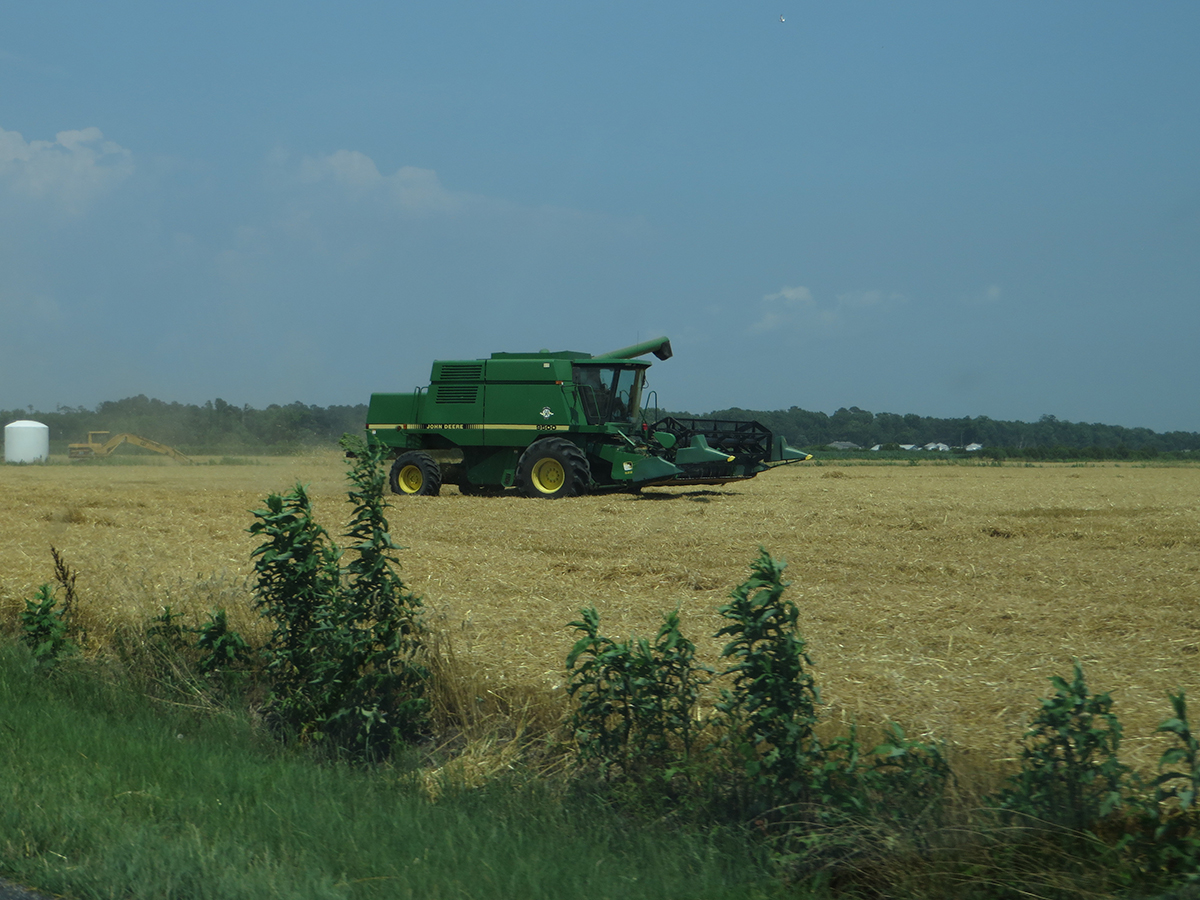
This is part of a series of special reports by Catherine Kozak, who attended the COP26 climate conference held in November.
Agriculture is a major industry in North Carolina, as well as an important source of food for the U.S.
Supporter Spotlight
In 2020, according to Carolina Demography, soybeans were North Carolina’s most valuable crop, at $674 million. Corn was the second-most valuable, at $483 million. Ranked third were the state’s famed sweet potatoes, valued at about $375 million, a 15.7% increase from 2019 ($324 million).
******
The Intergovernmental Panel on Climate Change, or IPCC, report on climate change and land released in 2019 reveals complex and often little understood dynamics between land, plants and water in a rapidly warming planet.
Related: Climate solutions may rely on farms, but technology lags
Findings include the following:
Supporter Spotlight
- About 25% of the mitigation of their carbon contributions pledged by nations in the 2015 Paris Agreement are land-based options, including soil carbon sequestration, agricultural management and bioenergy, as well as reduced deforestation and forest sinks
- Between 21% to 37% of total greenhouse gas emissions are related to the food system, from agriculture to transport to processing to consumption. Of that, 9-14% of emissions are from crop and livestock activities, and 5-14% come from land use and land use change such as peatland degradation and deforestation. An additional 5-10% are from supply chain activities, including food loss and food waste.
Suggested mitigation tactics include the following:
- Reduction in crop and livestock emissions and modifications in food choices.
- Sequestering carbon in soils and biomass and reducing fertilizer emissions.
- Combined supply-side and demand-side actions to reduce greenhouse gas emissions and enhance food system resilience.
- Conditions to enable adaptation and risk-sharing created and supported through public policies and incentives.
“Such combined measures can enable the implementation of large-scale land-based adaptation and mitigation strategies without threatening food security from increased competition for land for food production and higher food prices,” the report said. “Without combined food system measures in farm management, supply chains, and demand, adverse effects would include increased numbers of malnourished people and impacts on smallholder farmers.”
*****
The North Carolina Climate Risk Assessment and Resilience Plan, released in June 2020, examines the climate change picture for the state.
Findings include the following:
- The water cycle is intensifying, resulting in more severe flooding and drought.
- Rainfall patterns are changing, with heavy rain falling in once-dry places and likely increased precipitation in high latitudes.
- Continued sea level rise throughout the 21st century in coastal areas will contribute to increased shoreline erosion and more severe and frequent flooding in low-lying areas.
- Extreme flood events that used to happen once a century could occur every year by 2100.
- Intense rain deluges combined with inadequate storm drainage infrastructure increase vulnerability of inland communities to flooding, putting them at more risk of suffering economic and agricultural losses.
- Natural areas and productive land within the state’s interior counties could be impacted by more frequent flooding, resulting in losses of habitats, fisheries and protective buffers in local communities.
- Groundwater and surface waters will become more vulnerable to contamination from saltwater intrusion caused by rising seas, changing salinity levels in estuarine communities.
- Increased saltwater intrusion due to sea level rise is expected to convert lower coastal floodplains from swamp forest to wetlands.
- Freshwater that is affected by saltwater intrusion could cause crop yields to decline and make farmland unsuitable for growing crops, in addition to leaving less available freshwater for agriculture.
- Expected elevated night-time temperatures will have outsized negative impacts on agriculture and forestry due to disruptions in plant physiology.
The report’s climate change recommendations for land include the following:
- Farm and forest assets must be protected by adaptive capacities, technologies, equipment, crops and strategies. Experienced and trained personnel will be necessary to address the increasing climate change hazards.
- More research and development is needed to create adaptive varieties and species for crops and animals to increase heat resistance.
- Regenerative practices need to be developed to sequester carbon in farmlands, pocosin and forests. Also, improvements in manure management on farms is required to prevent greenhouse gas emissions.
- Protection of the state’s endemic species with adaptive management is a necessary responsibility.
- Pocosin and peatlands must be restored and/or enhanced in order to prevent soil loss and wildfire risk.







